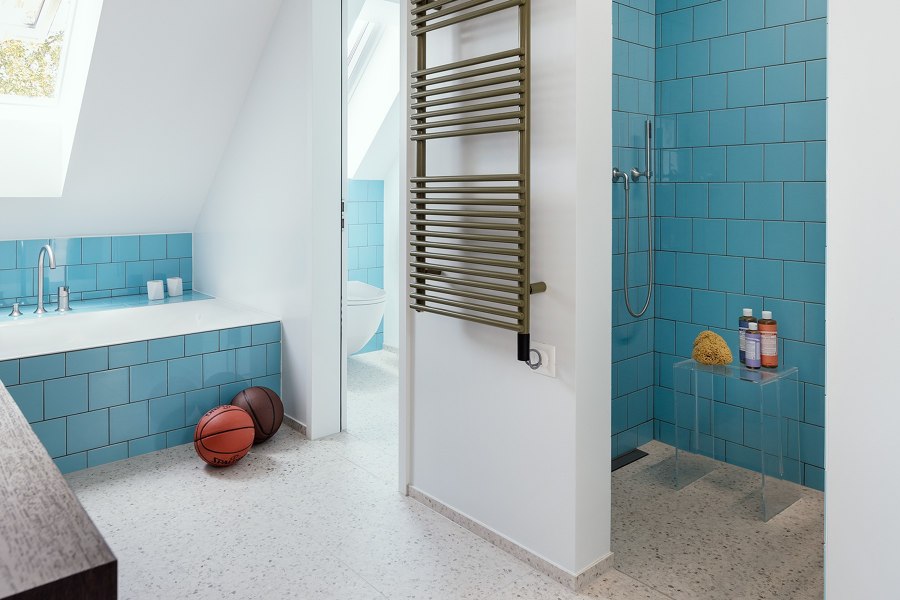Win-win situation: Joulia's energy-saving shower system
Brand story by Markus Hieke
Biel-Bienne, Suisse
11.04.22
Joulia's shower channels enable the heat from warm outflowing water to be recovered and recycled, thus offering a shower solution that's not only comfortable, but sustainable, too.
Easy come, easy go? Joulia's shower channels enable the heat from outflowing shower wastewater to be recovered. Cold water is preheated within the compact system and only then led to the mixer

Easy come, easy go? Joulia's shower channels enable the heat from outflowing shower wastewater to be recovered. Cold water is preheated within the compact system and only then led to the mixer
×I had never thought about my own environmental footprint in the shower as much as I have since my conversation with Reto Schmid. The designer is CEO and co-founder of the Swiss company Joulia, which is entirely dedicated to heat recovery from shower wastewater.
Joulia-Inline: Wastewater flows around a double-walled copper pipe, and the residual heat is transferred to the cold water thanks to the principle of heat exchange. When showering, less hot water is thus needed to reach the comfort temperature
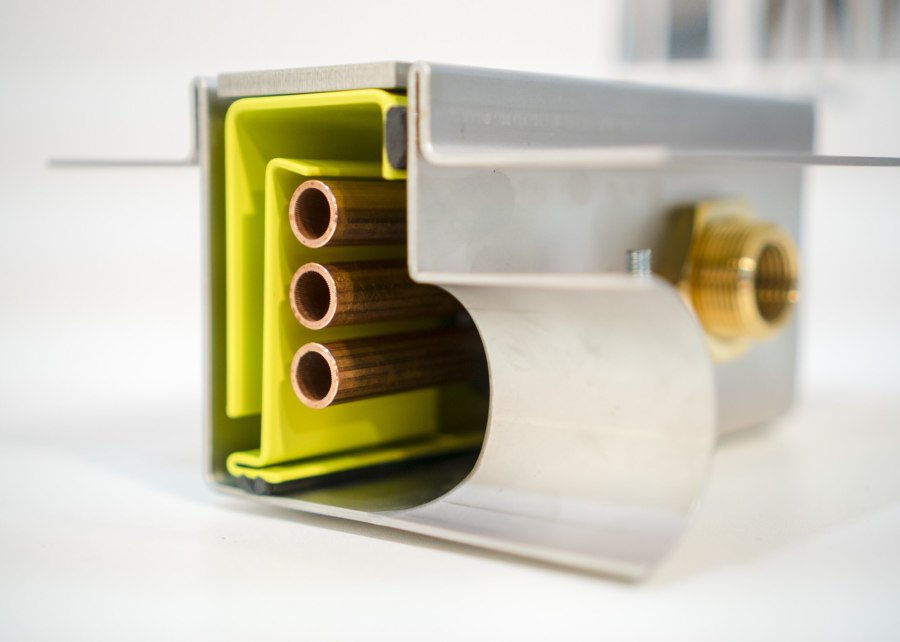
Joulia-Inline: Wastewater flows around a double-walled copper pipe, and the residual heat is transferred to the cold water thanks to the principle of heat exchange. When showering, less hot water is thus needed to reach the comfort temperature
×It makes sense that there is potential behind this, because it is the same with personal hygiene: while generations before us had no running water at all for a long time, washed at the washbasin and took a warm bath perhaps once a week at the most, in modern western civilisation, we generally shower every day – sometimes even twice a day. We use enormous amounts of energy to heat our shower water, to insulate the pipes that carry the warm water from the boiler to our rain shower – only to watch it flow away once it has doused us from head to toe. Could there be any better way to waste resources?
Closing gaps in the cycle
In modern, well-insulated homes, more than half of the heat demand is for hot water alone, and 50 to 80% of that is used for showering, explains Schmid. The European Commission recently declared the importance of reducing hot water consumption in the future, so it makes sense to take a closer look at this cycle. This has already been done many times, of course, but up until now, however, the focus has been on what lies in front of the shower head, not on the thermal energy that is still contained in the shower wastewater. A good twelve years ago, therefore, the idea of heat recovery below the shower tray was born. This was initiated as a project by the innovation factory Creaholic, which, like the spin-off company Joulia, which was founded from it – is based in Biel, Switzerland. Christoph Rusch, the current CTO and co-inventor of Joulia, came up with the idea. They presented their first product for sale in 2012, and the interest was immediately huge.
On the left you see the usual installation scheme, with 100% of residual heat being lost. In the middle and on the right, cold water is directed through a Joulia channel and pre-heated by 10C° to 20C°, so saving energy, CO2 and, ultimately, money
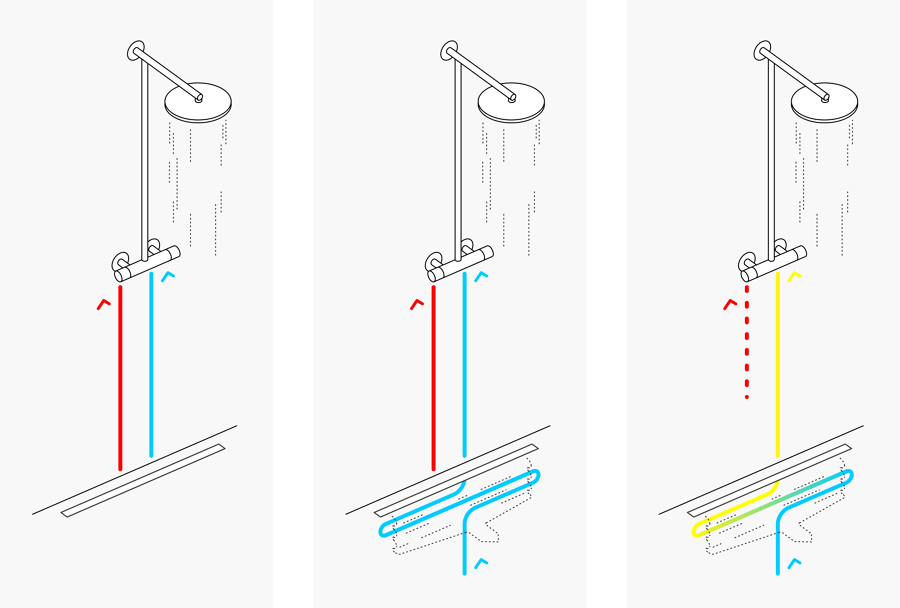
On the left you see the usual installation scheme, with 100% of residual heat being lost. In the middle and on the right, cold water is directed through a Joulia channel and pre-heated by 10C° to 20C°, so saving energy, CO2 and, ultimately, money
×Comfort and efficiency in harmony
In the meantime, the model – originally a 90 by 90 cm shower tray with copper pipes on the underside – has been further developed into a compact shower channel. The declared aim was that the person taking a shower should not notice the heat-recovering technology either in the design or in the application, but rather the reuced energy consumption as well as, ultimately, lower energy bills. To achieve this, the Joulia shower channel is installed very similarly to conventional drains. The crucial difference is that the cold water inlet of the shower is first led through a double-walled pipe made of heat-conducting copper inside the channel before it is connected to the cold water connection of the shower mixer in the normal way.
When the user starts showering, the warm waste water silently flows around this special cold water pipe inside the channel and thus preheats the cold water from 10 to up to 30 degrees Celsius, according to the heat exchange principle. Consequently, much less hot water is needed in the subsequent showering process to achieve the desired comfort temperature of 36 to 40 degrees Celsius. Schmid speaks of energy savings of 20 to 50%, which is enormous.
The incentive was to develop a system that users don't really notice, other than the lower energy consumption, of course. Joulia-Inline can be used in new (left) as well as old buildings (right) thanks to different construction heights
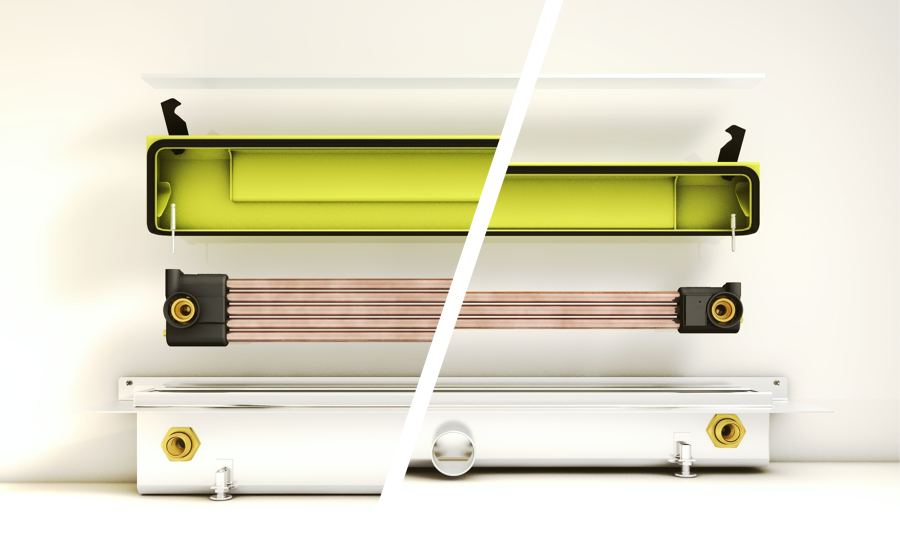
The incentive was to develop a system that users don't really notice, other than the lower energy consumption, of course. Joulia-Inline can be used in new (left) as well as old buildings (right) thanks to different construction heights
×System-independent in old and new buildings
The potential for savings is not only dependent on the desired temperature and the temperature of the cold and hot water. ‘The more copper pipe that is used, the more effective the channel is,’ Schmid explains. For example, there are different installation heights for Joulia-Inline. The installation height of nine cm, which is equipped with three copper pipes, is particularly suitable for old buildings. For new buildings, the somewhat higher version of twelve cm is recommended, which has five copper pipes and is also available at a lower level, then with ten copper pipes (Joulia-Twinline).
The number of integrated copper pipes determines the efficiency of the system. In addition to shower channels with three and five pipes, there is also Joulia-Twinline with has two sets of five copper pipes
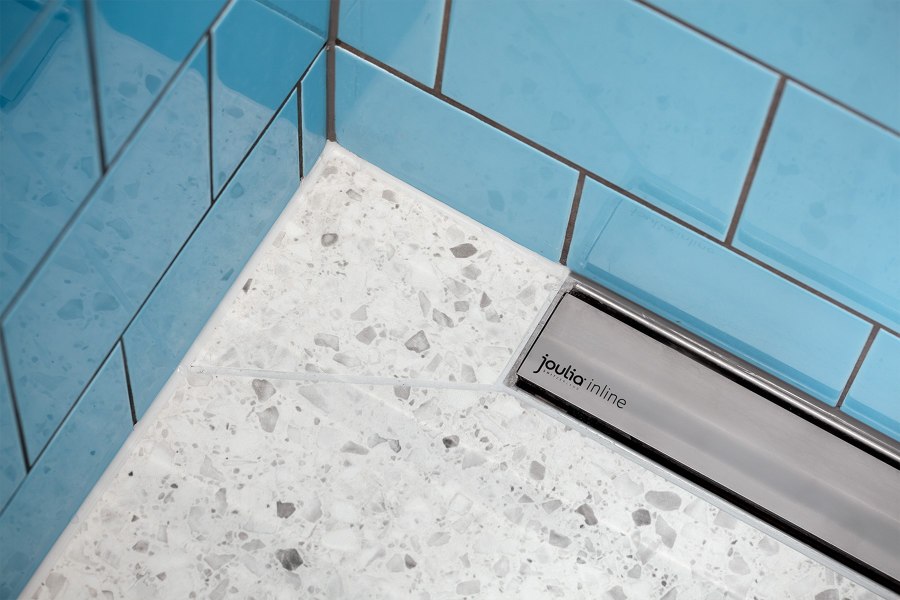
The number of integrated copper pipes determines the efficiency of the system. In addition to shower channels with three and five pipes, there is also Joulia-Twinline with has two sets of five copper pipes
×It is a simple principle with a dramatic effect, and is independent of the type of water heating system. This means that the system can be combined with oil, gas, pellets, heat pump, solar thermal, fresh water stations, instantaneous water heaters and other technologies. Another argument in its favour is that the heat exchanger of a Joulia shower channel can also be easily removed. Of course, the system is drinking water certified, thanks to a specially patented safety system and an elaborate long-term test by the German Technical and Scientific Association for Gas and Water (DVGW). The system is KfW-eligible, Passive House certified and integrated in DIN V 18599. The design of the product is deliberately unobtrusive and it goes without saying that cleaning the channel is also very easy, Schmid assures. The cover can be removed by the user, and the inside simply brushed and rinsed.
Maintenance of the Joulia shower channels is as simple as its minimalist design. The cover and odour trap can be easily removed, while the pipes and the interior can be cleaned with the brush provided and then rinsed out
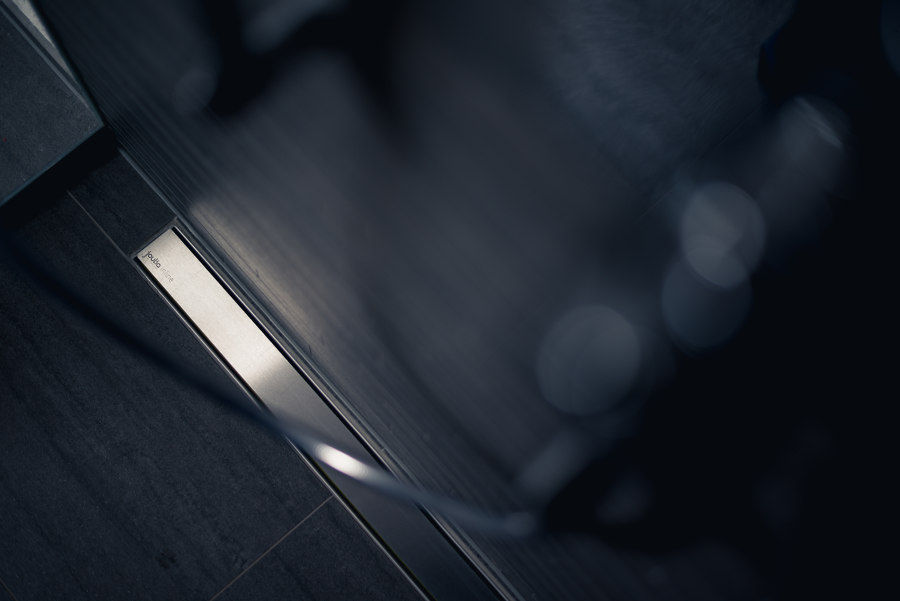
Maintenance of the Joulia shower channels is as simple as its minimalist design. The cover and odour trap can be easily removed, while the pipes and the interior can be cleaned with the brush provided and then rinsed out
×In order to be able to offer the principle in even greater variety, Joulia is currently cooperating with sanitary manufacturers such as Kaldewei, who are developing the enamelled shower surface for Joulia heat recovery. ‘We are not primarily concerned with people saving their energy by saving water,’ says Schmid. ‘We want to achieve that energy is used much more efficiently while maintaining the same level of comfort.’ In Switzerland and the Netherlands, Joulia is already installed in thousands of households. Now the company is concentrating primarily on the German market, where the system is offered through installers. Schmid quotes an additional price of around 600 euros for the integration of the shower channels compared to shower channels without heat recovery. This will have paid for itself after three to five years – and of course repreesents a positive investment in the environment, too.
© Architonic




